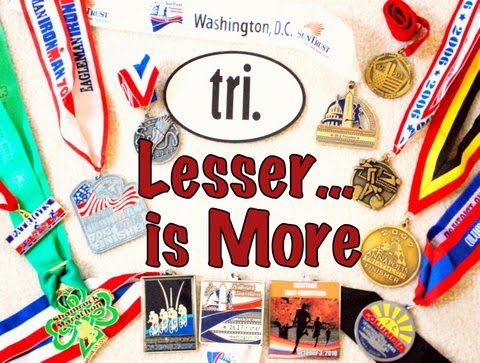Over the past few years of training and racing, I've become much more interested in the science and theory behind endurance sports. Sure, its the training that gets me going each day, but to learn about why we do the workouts we do and what the impact is on our body is something in particular that has interested me. Some people could care less about this stuff and would rather spend that time training. But for me, I consider this latest rash of reading I've gotten into, some serious training. After all, it is guiding my training approach to this year.
Let me just say that I am not a reader. Never have been. When I find something that interests me, I read it. Otherwise, reading is not something I'd say I do often. However, through a series of posts I found through some blogs of endurance coaches and former athletes, I noticed a trend among the many books they had on their "must read" list. So when I went with Rebecca to the library a while back, I figured I'd check and see if any of those books were there. Sure enough, they were!
To make a long story short (too late), over the past several months, I've been reading through some very insightful books for those wishing to learn more about about endurance sports. In
 particular, I'd recommend the following books:
particular, I'd recommend the following books:- Going Long: Training for Iron Distance Triathlons by Joe Friel and Gordo Byrn
Going Long is a shorter book that touches on the basic principles of training for long distance triathlons. The concepts used throughout the book are easy to understand and I seemed to fly through the book.
-
 The Lore of Running by Timothy Noakes
The Lore of Running by Timothy NoakesFor those wishing to know more, I'd highly recommend The Lore of Running. It is without a doubt, the most comprehensive book I have ever read. You will learn everything you ever wanted to know about running, how the body works with regard to training/recovery, and the science behind it all. It took me a long time to read through all 944 pages, but it was well worth it. If nothing else, I'd recommend flipping through the sections that interest you. You can cut down on a lot of the content that way. For example, it may not interest you to know about how a woman's "time of the month" affects her training. So if you are a guy, I'd recommend skipping that one ;) In any case, there is a TON of good stuff in there.
There are many more books out there that I am interested in reading and will do so once I get my hands on them. In the meantime, I think this is enough to chew on.
In my next post, I'll talk about how these books are shaping my training philosophy moving forward.

1 comment:
I'm not sure if I'd skip that section...at least then I'd maybe understand the excuses she gives that time of month. ;)
I have the first book on my shelf, though, haven't gotten to reading it yet. The second book though...hmm..Amazon's in my future.
Post a Comment